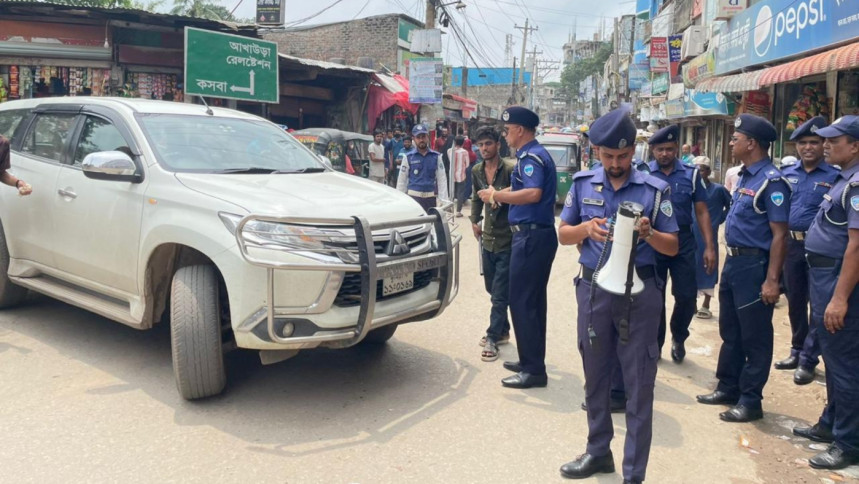Many police personnel joined their police stations in Brahmanbaria, Sylhet, and Narayanganj today, following six days of work abstention.
Operations resumed in eight out of nine stations in Brahmanbaria.
However, Brahmanbaria Sadar Model Police Station remains non-operational, as it was severely damaged by arson and vandalism during the mass uprising that led to former prime minister Sheikh Hasina’s resignation on August 5.
Brahmanbaria Police Superintendent Mohammad Shakhawat Hossain said, “Army personnel have been deployed to secure the police stations and assist in patrolling and other activities.”
The attacks on August 5 targeted the Brahmanbaria Sadar Police Station and others in Ashuganj, Bijoynagar, Kasba, and Akhaura.
However, only the Sadar station suffered extensive damage.
Police officers, including OCs, resumed work at Nabinagar, Bancharampur, Kasba, Akhaura, Sarail, Ashuganj, Nasirnagar, and Bijoynagar police stations.
During the weeklong work abstention, incidents of theft, robbery, mugging, and politically motivated violence were reported in local neighbourhoods.
The attack on Brahmanbaria Sadar Model Police Station resulted in the destruction of important documents, police vehicles, and the looting of the armoury and seized motorcycles. Army personnel rescued police officers trapped inside the station.
Five days later, general students and madrasa students cleared debris from the demolished police station.
In Sylhet, police personnel returned to work today, and seventeen police stations became functional.
Zakir Hossain Khan, commissioner of Sylhet Metropolitan Police, said, “All six police stations under the metropolitan jurisdiction are functional, but three police outposts were burnt to ashes and will not be functional soon.
“Traffic police are also deployed to maintain discipline on city streets, and we hope people will support us,” he added.
During a visit to several police stations in Sylhet this morning, only a few members of the public were seen there, and many services, including those requiring technology, have yet to resume.
Abdul Mannan, superintendent of Sylhet District Police, said, “All 11 police stations under district jurisdiction are functional, and many police members are returning to work after they called off the strike. But as the SP office was burnt badly, we have started repair work to to make it fully functional.”
Some traffic police also returned to the streets in the city, assisted by members of the scout and BNCC.
Meanwhile, in Narayanganj, five out of seven police stations resumed limited operations, with 70 percent of police personnel returning to work today.
Traffic police started limited duty on roads after 2:00pm, according to Amir Khasru, additional superintendent of police (admin) of Narayanganj.
“Students, along with Ansar and fire personnel, have been controlling the traffic for the past few days. After a directive from higher authorities, police started their duty on roads in a limited capacity to control traffic,” he added.
Siddhirganj and Araihazar police stations, torched on August 5, remain non-operational.
Attackers vandalised and looted both stations, stealing firearms and ammunition.
Amir said they were working to prepare the Siddhirganj station building for use, while four buildings of Araihazar station were burnt to ashes.
“We are planning to start the activities of Araihazar Police Station and Gopaldi Investigation Center,” he said.
At Fatullah Police Station, army personnel were seen guarding the station’s front gate, while police officers inside wore plainclothes.
Officer-in-Charge Nure Azam said, “More than 75 percent of police personnel joined this station, but no member is going out for investigation or operations.”
Employees of police administration announced a work abstention from August 6 to press for a number of demands following clashes between protesters and police during the anti-quota movement.
Police presence on streets had been thinning since before that date.


